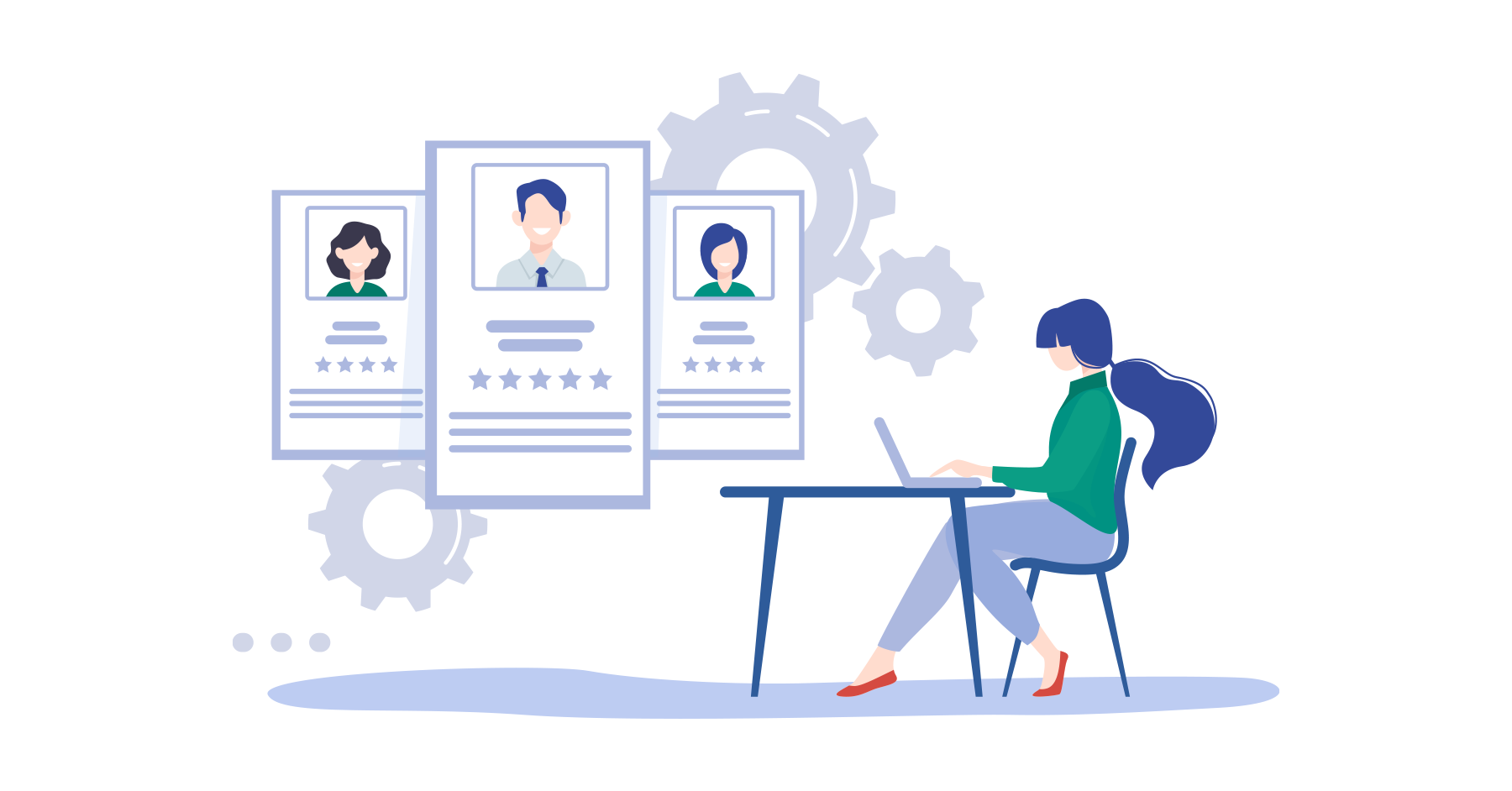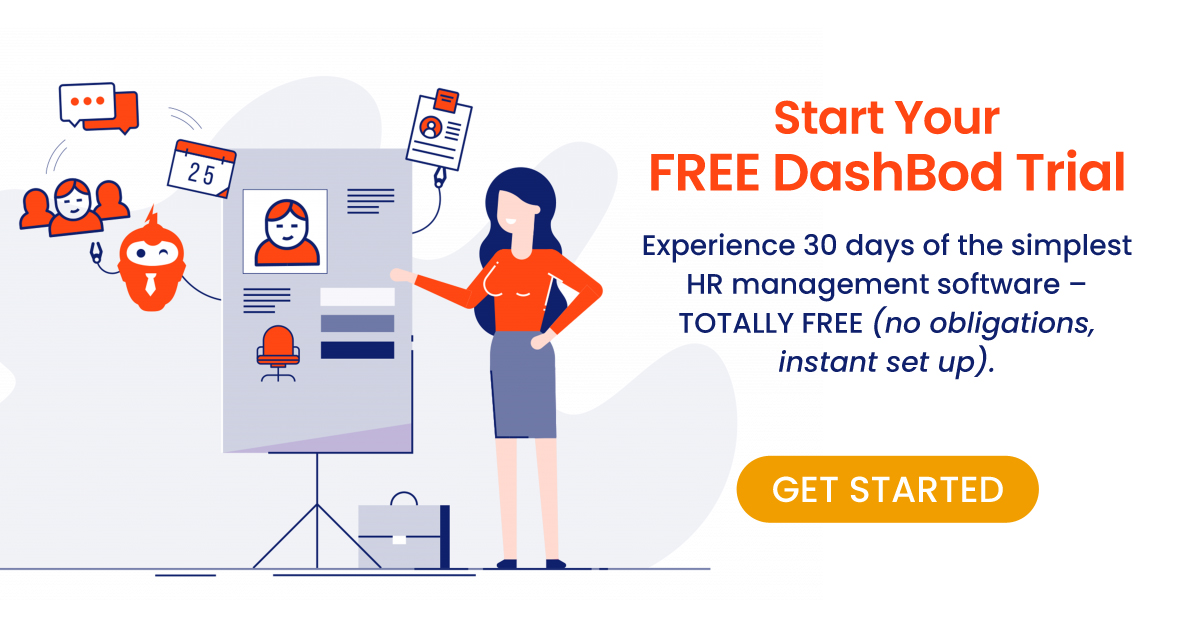There was once a time where paying wages on time was all that was needed to retain staff. Now, a human resource team’s daily tasks include talent acquisition, performance management, training and development and many more.
But rather than overstaffing your HR department, a better investment is an HRM system with features built specially for Singapore SMEs to expedite and improve the effectiveness of your daily tasks.
These clusters of software solutions allow HR to automate routine tasks and expedite processes in order to focus more attention on critical matters.
However, HR leaders don’t have time to identify the perfect HRM system with features that are aligned to their objectives.
Here Are 7 Key Features Every HRM System Must Have:
1. Employee Management
Employee management is perhaps one of the most fundamental roles of any Human Resource team. So naturally, it should be a core function of every HRM system.
This feature will help in planning, hiring, managing, assessing and analysing human resources. It can span across multiple departments, locations and timelines.
In an entry-level HRM system, you’ll find features in this module being merely a database for maintaining records.
A more comprehensive HR software will allow the organisation to plan their workforce as the dynamics changes.
Capabilities include:
- Employee roles and responsibilities
- Employment history
- Compensation details
- Evaluations and progressions
- Records and documents from hire to fire
For more information about employee management and staying compliant with MOM regulations, read HR matters: All you need to know about employee record keeping
Even then, pure management of documents is not enough.
Employees now understand the notion of doing more with less and will expect HR to implement faster processes, more simply for them.
To make sure things are updated and accurate, HR software should allow employees to have access to their own records.
2. Employee Self-Service
Having a self-service function eliminates the need for HR staff to handle these mundane clerical requests.
Features like these in an HRM system empowers employees by giving them the option to view, edit and manage their own data (both personal and work-related).
A good HR management software should also allow multi-channel accessibility with selected data restriction.
For example, an employee may be able to view and edit all his personal details, but can only view his assessments, not edit them. He might also be able to access colleague’s basic contact details and nothing more, for confidentiality purposes.
Capabilities include:
- Viewing performance records
- Updating personal details
- Networking within the organisation
- Making requests for intra-organisational matters
3. Attendance and Leave Tracking
Every employee works hours and HR needs to be tracking their schedules and time-off management. Attendance is a factor of workforce productivity and overall, the organisation’s bottom line.
Scheduling shifts
Not only does automated scheduling make managers’ lives easier, but it’s also less confusing and frustrating for employees too.
Scheduling software goes beyond just managing daily and weekly schedules. The scheduler allows an employee to request time off, choose, swap and change shifts that can be approved or denied in real-time.
Whether you have a startup, small business or work in an enterprise-level organisation, the right employee shift scheduling software can streamline your HR efficiencies.
Attendance, Absence and Sick Days
Regardless of where your employees are – in office, on-site or working from home, their attendance can be tracked and companies can 1) reduce time wasted on manual tracking 2) reduce costs related to human errors, fraud and wrong entries 3) identify ways to increase productivity.
Benefits of an Integrated Attendance Tracking Module with Payroll System
| Salary Calculation | Job Costing | Eliminate Errors |
|---|---|---|
| Compute overtime hours | Track across employee groups based on fixed and flexible working hours | Eliminate human error when computing employee time in office |
| Compute hours worked for part-time employees | Take into account employee rest days | Full audit trail |
| Compute rewards or bonus for employees with good attendance | No manual computation required | Accurate processing and reconciliation with timesheets |
| Track transport, meal, shift allowance | Automatically update numbers across accounts | |
| Track days absent from work | Cut down admin time processing employee attendance | |
| Direct integration with payroll system |
Capabilities include:
- Daily attendance report
- Daily absence report
- Daily time in/time out report
- Monthly late-coming report
- Monthly overtime report
- Monthly overtime transaction report
It solves the following problems:
- Who are the employees frequently late for work?
- How much is their lateness costing the company each month?
- Who worked overtime last week?
- Is there a way to boost the punctuality of employees?
- Should there be a penalty for late-coming?
- Are there any employees abusing the “punch card” system?
A powerful HR management software will help HR leaders and top management view, track, monitor and manage employee movement in a single interface. It also integrates seamlessly with payroll.
4. Payroll and Submissions
Payroll is one of the most essential functions of any business. It is an obligation to make sure your employees are compensated for the right amount, on time. Payroll software helps to automate the entire payroll process so you don’t have to manually complete them on your own.
Salary
Complete the entire payroll run in just a few clicks. Make your employees happy. Save yourself time. Save your company money.
How does that sound?
Each employee has a personal payroll profile where they have information about their wages, bank account details (sometimes their salary is split into multiple accounts), payroll deductions, time-off balance, fringe benefits, and more.
With your HR management system doing all the tracking, computing and data extracting, at the end of each pay period, all you have to do is click a few buttons and the payroll can be processed.
Now you’ll always have accurate and timely payroll!
You might be interested in: The step by step guide to payroll software for small busineses
A basic HRM system in Singapore usually comes with payroll features to automatically calculate employer CPF contributions and deduct employee contributions from their monthly salary.
As the number of employees in your organisation increases, it can get more tedious to manually calculate CPF contributions and submit them.
Your payroll system is connected to the attendance-tracking module and benefits information in the employee records. So hours worked, time-off, allowance, salary can be automatically calculated and factored in when calculating and submitting their CPF.
5. Cloud-Based
Accessibility
There’s a fundamental difference between an on-premise HR program and cloud HR software. Specifically, it boils down to accessibility.
Typically, organisations that are looking to streamline their HR processes through software end up using more than one management system. There’s one for payroll, one system for online talent management, another for performance management, attendance and the list goes on.
Sure, they are niche systems but these need to be purchased, pre-installed and maintained manually. It often amounts to a significant cost. One more thing…you’ll only be able to work on your HR tasks on hardware where the program is installed.
Cloud based services, on the other hand, don’t. You can access it anywhere via the internet, from any location. This makes multi-user access easy and all team members have the latest information.
Security
Just as cloud computing centralizes applications and data, cloud security centralizes protection.
43% of cyber attacks target small business. The global average cost of a data breach is $3.9 million across SMEs. Not to mention the reputational damage. It only makes sense that companies focus on security.
One of the benefits of utilizing cloud HR software for storage and security is that it eliminates the need to invest in dedicated hardware.
Not only does this reduce capital expenditure, but it also reduces administrative overheads.
Where once, dedicated IT teams were fighting security issues reactively, cloud security delivers proactive security features that offer protection 24/7 with little or no human intervention.
Capabilities include:
- A minimum of two-factor authentication access for all users
- Conducting quarterly penetration testing
- Disaster recovery (data backup, retention, and recovery policies)
Interoperability
Seamless integration of an HRM system with other features will improve the effectiveness and efficiency of not just the HR department, but the organisation as a whole.
Sometimes, your HR software might need to draw data from another database in the cloud. So investing in a standalone HR management software is pointless.
Before organisations choose their HR tool, verify it has integration capabilities first. Even better, find a cloud based HR software with built-in accounting and operations capabilities.
6. Dynamic Reports
An effective HR management software is one that offers a complete view of the organisation’s workforce and operations in one single interface.
Mere reporting doesn’t give you that. Insights do.
Only when you have insights, can you tell a compelling data-driven story to motivate action and encourage change.
With dynamic reporting, you can identify trends, blend data from multiple sources and deliver critical recommendations to improve the organisation’s bottom line.
You might be interested in: 29 Common HR metrics every organization should be measuring
7. User-Centric Design
First of all, you need it to be simple to use and easy to navigate. No one wants days, weeks or even months of downtime undergoing training and then struggling to learn how to use a new system.
Your new HR management software is supposed to make life easier for you, not cause added frustrations.
You also want it to have a clean interface with clear categories so you can accurately key and extract data without making mistakes.
Simplifying Your HR Processes
As businesses, we want to be as efficient as possible, produce the most amount of output at the lowest price. Cloud HR software is an excellent way to achieve this goal. An automated HR management software is the answer to scaling – and no organisation should miss their chance to use it.
There are many HRM systems available with many state-of-the-art features, but the right one will make all the difference for your team and your organisation.



